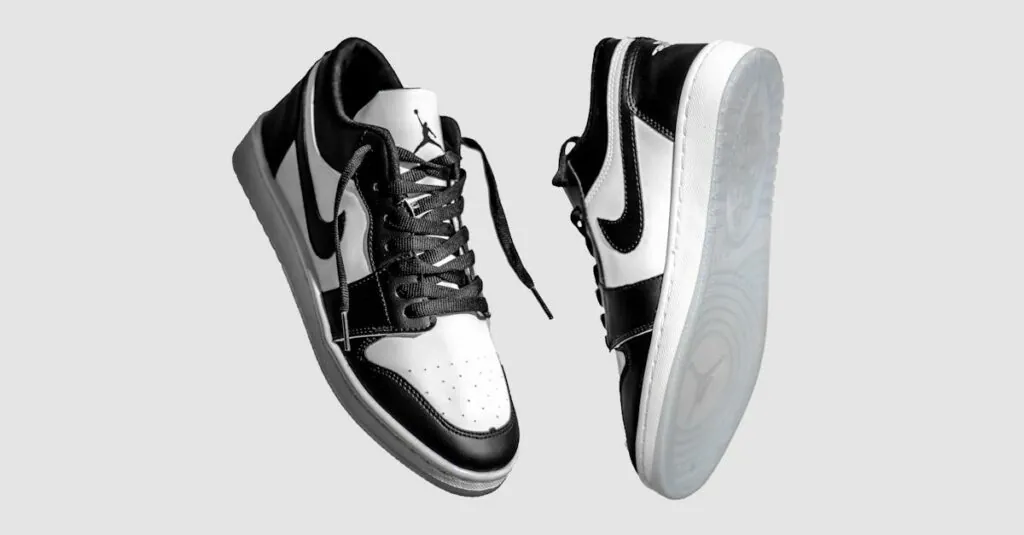In today’s fast-paced digital world, brand tone visuals are the secret sauce that can turn a bland brand into a memorable one. Think of them as the personality traits of your brand—without them, you’re just another face in the crowd. When done right, these visuals can evoke emotions, tell stories, and even make people chuckle—because who doesn’t love a good laugh while scrolling through their feeds?
Table of Contents
ToggleUnderstanding Brand Tone Visuals
Brand tone visuals encapsulate a brand’s personality, creating a powerful connection with its audience. These visuals communicate values and evoke emotions through design elements such as colors, fonts, and imagery.
Definition of Brand Tone Visuals
Brand tone visuals refer to the visual aspects that embody a brand’s character and messaging. They include elements such as logos, color palettes, and typography, which together convey the intended brand voice. This cohesive visual identity enables brands to express their unique narrative and establish recognition among consumers.
Importance of Brand Tone in Visuals
Brand tone significantly influences how visual elements resonate with the audience. Consistent visuals enhance brand memory and foster loyalty, making it easier for consumers to identify and choose the brand. Engaging visuals can communicate messages swiftly, thus enhancing user experience and enriching brand interaction. In a competitive market, well-defined brand tone visuals separate brands from their competitors, solidifying their position in consumers’ minds.
Elements of Brand Tone Visuals
Brand tone visuals encompass various design elements that establish a brand’s identity. They create emotional connections and enhance recognition.
Color Psychology
Color psychology significantly impacts consumers’ perceptions. Different colors evoke specific emotions and responses, influencing brand associations. For instance, blue often conveys trust and reliability, while red can evoke excitement and urgency. Brands can choose color palettes that align with their messaging to enhance emotional engagement. Understanding the psychological effects of each color strengthens the brand’s visual storytelling, ensuring that colors resonate with the target audience.
Typography Choices
Typography choices also play a crucial role in brand tone visuals. Fonts communicate personality traits and emotional cues, just as colors do. For example, serif fonts often evoke tradition and reliability, while sans-serif fonts project modernity and simplicity. Selecting the right typography enhances the brand’s voice and fosters readability. Consistent font usage reinforces brand recognition, making it easier for consumers to identify and connect with the brand’s message.
Imagery and Graphics
Imagery and graphics contribute significantly to the brand’s visual identity. Visual elements such as photographs and illustrations can convey complex ideas quickly and memorably. They enrich storytelling and contextualize the brand’s purpose. Selecting appropriate images that reflect the brand’s values and audience preferences can strengthen connections. High-quality visuals enhance the user experience and encourage engagement, making imagery an essential component of effective brand tone visuals.
Creating Effective Brand Tone Visuals
Creating effective brand tone visuals requires a deep understanding of the brand’s voice and values. Visual elements must encapsulate a brand’s unique personality, ensuring they resonate with the target audience.
Identifying Your Brand’s Voice
Identifying a brand’s voice starts with understanding its mission and core values. Conducting audience research highlights how customers perceive the brand, shaping the tone accordingly. Integrating emotional language into messaging allows brands to form authentic connections. Engaging stakeholders and gathering feedback helps refine the voice further. Consistency across all visual elements reinforces the definition, making elements like logos, colors, and fonts reflect the personality accurately.
Aligning Visuals with Brand Values
Aligning visuals with brand values ensures that the brand message is coherent. Using a consistent color palette connects emotional resonance with target audiences. Typography choices should reflect the brand’s character, whether playful or professional. Incorporating imagery that tells the brand’s story enhances engagement. Strong visuals communicate the ethos effectively, fostering loyalty among consumers. Consistent alignment solidifies the brand’s identity, making it memorable in the crowded market.
Analyzing Successful Brand Tone Visuals
Brand tone visuals effectively shape audience perceptions and foster brand loyalty. By examining successful examples, brands can identify characteristics that resonate with consumers.
Case Studies of Effective Brands
Nike exemplifies strong brand tone visuals through its iconic swoosh logo and bold color schemes. The logo evokes motivation and performance, aligning with its “Just Do It” mantra. Apple consistently uses minimalist design elements to reflect its innovative image, enhancing user experience. Coca-Cola employs vibrant colors and dynamic typography, creating a sense of happiness and nostalgia. Each of these brands effectively connects with audiences by strategically utilizing visuals that embody their core values and messaging.
Common Characteristics of Strong Visuals
Strong brand tone visuals share specific characteristics that drive recognition and recall. Consistency across all platforms guarantees brand familiarity and trust. High-quality imagery captures attention and enhances storytelling, while color palettes evoke distinct emotions and associations. Typography choices convey personality traits, influencing how consumers perceive the brand. Engaging visuals often include relatable themes that resonate with target audiences, reinforcing brand identity and fostering emotional connections. Together, these elements create a cohesive visual language that stands out in competitive markets.
Brand tone visuals are vital for establishing a brand’s identity in a competitive landscape. They create emotional connections and enhance recognition through thoughtful design elements. By understanding the nuances of color psychology typography and imagery brands can effectively communicate their values and resonate with their audience.
Investing in strong brand tone visuals not only distinguishes a brand but also fosters loyalty among consumers. As brands continue to navigate the digital realm it’s essential to prioritize these visual elements to ensure a lasting impact. The right visuals can transform a brand from ordinary to unforgettable making them indispensable in today’s market.




